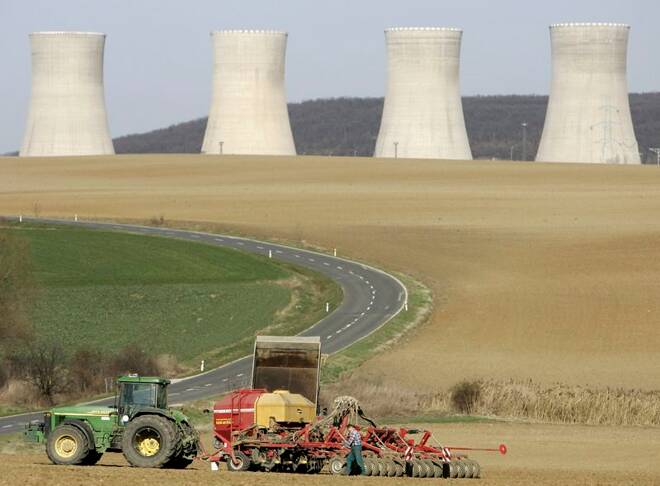Advertisement
Advertisement
Slovaks fuel up new nuclear plant as Europe grapples with energy crisis
By:
By Radovan Stoklasa MOCHOVCE, Slovakia (Reuters) - Slovak utility Slovenske Elektrarne has completed loading fuel to the long-delayed Mochovce 3 nuclear power plant, the plant's director said, making it one of the few new nuclear units to come online as Europe struggles with a power supply crunch.
(This September 13 story was refiled to remove a picture)
By Radovan Stoklasa
MOCHOVCE, Slovakia (Reuters) – Slovak utility Slovenske Elektrarne has completed loading fuel to the long-delayed Mochovce 3 nuclear power plant, the plant’s director said, making it one of the few new nuclear units to come online as Europe struggles with a power supply crunch.
The 471-megawatt unit is expected to produce first electricity in late October or early November, plant director Martin Mraz told Reuters.
“We will be at full production at the beginning of 2023,” Mraz said at the plant as the last fuel assemblies were being loaded to the reactor.
The new unit will produce around 3.7 Terrawatt hours per year, covering 13% of Slovakia’s electricity consumption and making the country self-sufficient, he said.
Cuts in Russian gas supplies to Europe in response to sanctions imposed on Moscow over its invasion of Ukraine, prompted a frantic search for alternatives to avert a looming energy crisis this winter heating season.
The European Union member will become a net electricity exporter after Slovenske complete Mochovce Unit 4, with about a two-year lag after the Unit 3.
Mochovce is based on the originally Soviet VVER design with control systems from Siemens and Areva.
“This new generation capacity … is the second nuclear power plant in Europe to now approach commercial production after a long period of construction,” said a spokesperson for Enel, a 33% co-owner of Slovenske, in emailed responses to Reuters questions. “Once it is put into operation, it will help reduce European dependence on gas,” the spokesperson said.
Construction was halted in the 1990s and resumed more than a decade ago but has suffered repeated delays and cost overruns, with the total cost of the two units seen at around 6 billion euros ($6.10 billion).
($1 = 0.9835 euros)
(Reporting by Radovan Stoklasa, writing by Jan Lopatka; Editing by Tomasz Janowski)
About the Author
Reuterscontributor
Reuters, the news and media division of Thomson Reuters, is the world’s largest international multimedia news provider reaching more than one billion people every day. Reuters provides trusted business, financial, national, and international news to professionals via Thomson Reuters desktops, the world's media organizations, and directly to consumers at Reuters.com and via Reuters TV. Learn more about Thomson Reuters products:
Did you find this article useful?
Latest news and analysis
Advertisement
